What is hotel photography?
Hotel photography is the practice of capturing images of hotels, hotel rooms, and hotel amenities to showcase them to potential guests.
Hotel photography techniques typically focus on highlighting the comfort of rooms, the aesthetic appeal of attractions in the hotel, and winning aspects of the local community or destination.
Hotel photography can be undertaken do-it-yourself (DIY) style or be performed by trained professionals, depending on budget and the particular circumstances of a property.
This blog will give you a full guide on how to get hotel photography right at your accommodation business.
Why is hospitality photography important?
Hospitality photography is important because first impressions truly do matter, and the photos of your property that guests view are often their first impression of your business. Afterall, your website and your listings on booking sites like Expedia or Airbnb are extensions of your physical property.
Compelling visuals can grab attention, showcase your offerings, and create a desire to stay or dine with you. Think of captivating photos as a digital storefront window that entices people to come inside (or in this case, book a room).
It’s important that you don’t leave all the wonders of your hotel to be a surprise or up to the imagination of your guests. You absolutely have to showcase everything amazing you have to offer.
A few more reasons why photography is so important include:
- It allows travellers to quickly learn more about your property, amenities, and destination by viewing images on key pages or a full gallery.
- Travellers can develop an emotional response and connection: Great hospitality photography goes beyond just showing a room or a plate of food. It should evoke emotions and tell a story. Pictures that capture the ambiance, comfort, and unique features of your property can create a sense of connection with potential guests. They can imagine themselves enjoying a relaxing stay, a delicious meal, or a memorable experience.
- You can tell a story: Beyond just rooms and food, hospitality photography can showcase the entire experience you offer. Pictures of smiling staff, happy guests enjoying themselves, or the surrounding beauty of your location can paint a complete picture and create a sense of what it’s like to stay or dine with you.
- You can target your ideal market with specific photos: If your typical guests are families, for example, you can use photos that show families in the property or display family-friendly amenities.
Make your hotel photography stand out to guests
Use Little Hotelier to create a beautiful, optimised website that captures the brilliance of your photos.
Learn moreHow hotel room photography impacts your website
Hotel room photography increases the value of your website and will help contribute to additional visitors and conversions. Often, more people will view image results of your property on Google than traditional results.
Without appealing photos, it will be near impossible to get international travellers to stay at your inn, bed and breakfast, guesthouse or small hotel. Even the type of image you use can impact the amount of people who click and book with you.
Here are some ways that hotel room photography will elevate your website:
- Compelling photos can act as a virtual tour, showcasing the style, comfort, and amenities your rooms offer.
- Well-lit pictures that capture the room’s spaciousness and inviting atmosphere can create a sense of desire and make guests imagine themselves relaxing in the space.
- Professional photography also builds trust and avoids blurry or misleading visuals that could disappoint guests upon arrival.
- Studies show that high-quality photography can significantly increase your website conversion rates, aka bookings.
- You can use your hotel room photos in all sorts of ways to market your hotel, such as using them on your Facebook and Instagram pages.
Consistent, high-quality visuals create a strong brand identity and ultimately make your website more memorable.

What you need to do before capturing professional hotel photography
It’s important to do some pre-planning before taking your photos.
First and foremost – Should you hire a professional photographer for your hotel website or can you achieve professional-quality hotel photography on your own? Consider both your budget and your goals. Afterall, there’s more to taking a good photo than simply having a fancy camera.
However, you know your property and your destination best, so if you have a good eye it could be worth having a go at it yourself. Just be sure you do have quality equipment.
If you do hire a professional, you need to outline what you plan to shoot and when. You want to ensure everything is captured in its best light and that you are obtaining images you know will entice travellers once they see it on your website or social media pages.
It also goes without saying that you need your exterior, rooms, and other interior areas to be looking as good as they can before you photograph them. Be careful here though. Don’t be tempted to dress up your rooms unrealistically or fill your hotel with props and extra features you think will make a photo more exciting or appealing. Guests want to see your property as it will be when they come to stay, so give that to them.
Mainly a property should be tidy and well-presented. You may even want to get a property stylist, depending on the reason for the photos. Anything not wanted in the shot should be taken out. Style always makes a big difference.
Hotel interior photography: Guidelines and best practices
Alright, here we are at the crunch. Let’s detail some of the most important guidelines you can use to make certain your hotel interior photography is up to scratch and is convincing enough to make travellers click ‘Book Now’ on your website.
1. Impeccable lighting
Lighting is the key to any spectacular photo and it’s something photographers agonise over. In your case, you may want to be using natural lighting whenever possible to give your property a comforting, authentic feel. With this in mind, early morning or late afternoon are going to be the way to go.
When it comes to the interior of your hotel and your rooms themselves, natural lighting might not always be possible if you want to capture the best shot. So learn how to stage lighting, using lamps, overhead lights or other sources to have everything in frame looking perfect.
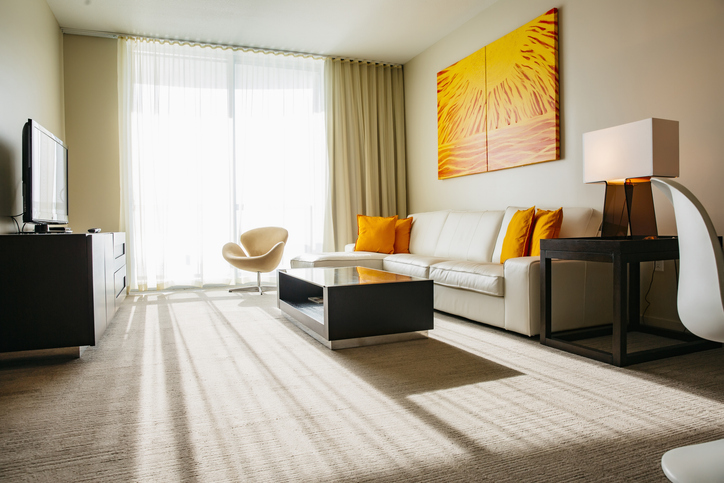
2. Spatial awareness
Knowing where to be or where to position the camera when the shutter clicks is crucial to ensuring your rooms look amazing. Generally, you can make rooms look bigger and more inviting by taking photographs from corners or through doorways. Using a wide angle lens is also beneficial.
It also helps to tidy the room and remove anything that could be seen to clutter up the shot. Like we said, don’t use any unnecessary props.
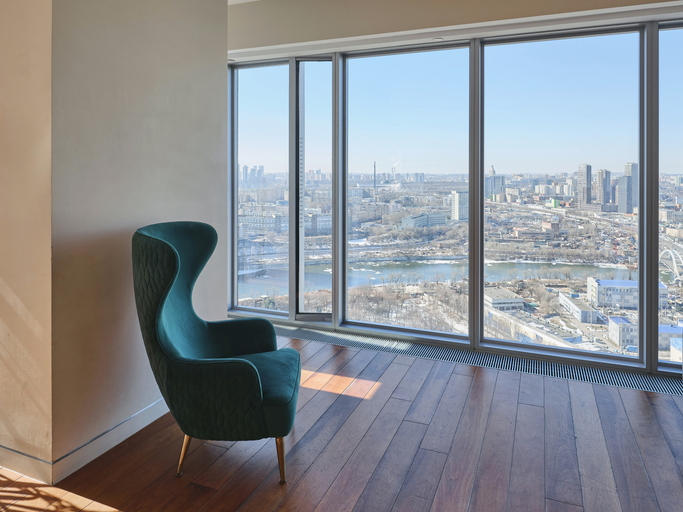
3. Know your angles
If you don’t know instinctively what will make your hotel shine, spend some time in the spaces you plan to photograph to get an idea of what angles you should use. Some believe shooting from high gets the best shot, but setting your camera low, below shoulder height can really make an impact and give your spaces more presence.
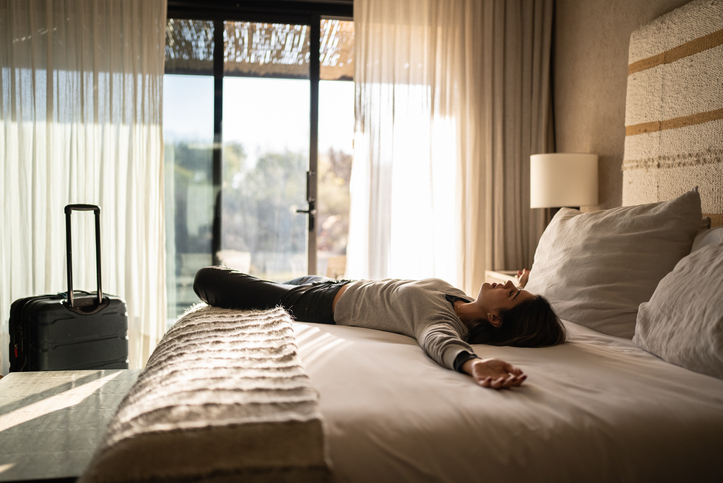
4. Go for immediate impact
Try to pick vistas that travellers will instantly react to, and imagine themselves experiencing. Think about capturing rooms with window views, or putting any of your unique features or amenities front and centre.
Make sure to balance this impact with the need to keep images clean and authentic. Try not to distort anything or edit them in a way that looks fake.
5. Always include room interiors in your galleries
The room is where guests will spend a large amount of time, so it’s pretty important they know what they’re getting into.
They want to know where the bed is, what furniture is in the rooms, what colour the walls are, how much space there is to move around, and more.
Showing inside your rooms in detail also means guests won’t be surprised or disappointed when they arrive, eliminating the chance for a bad review.
It’s all about angle and lighting. With wide angle lenses, objects in the room become too distorted if you don’t have the right angle or vantage point. White rooms are the best, with flash to bounce light off the walls to create soft light with less shadow.
How to photograph hotel rooms: Ideas to stand out
With the basic principles covered, it’s time to look at a full list of ideas and tips to ensure your photos have maximum impact.
Consider these easy to implement ideas for your hotel photography:
- Pick your time: Generally early in the morning or late in the afternoon is best for capturing interiors as the quality of natural light is softer and shadows are less harsh than in the middle of the day.
- Keep the seasons in mind: When does your property truly shine? Is it a winter wonderland or does it have a sunny beachy vibe? Take your photos in the season when your property is most popular.
- Do you need a human presence? This should be viewed on a case by case basis. Sometimes the need for a human presence is there, to give guests a better idea of how they might enjoy your property, but ultimately it should be spared where possible.
- Prioritise symmetry: Symmetry puts the eye at ease and makes things seem much cleaner and more organised, creating a better impression on people viewing your website
- Don’t be shy about numbers: You can never have too many photos. Before 20-30 photos might have been deemed acceptable. Today, with such a vibrant online merchandising environment, even small hotels should consider having more high quality photos to use in their gallery, on their social media pages, on their booking engine, and third-party booking channels.
- Always clean up: Make sure the room is tidy, uncluttered and clean before photography even starts (this sounds simple but what can look OK to the eye can often appear cluttered or messy to the camera).
- Don’t go too wide on your angles: It’s very tempting to use an ultra wide angle (UWA) lens to try and fit as much of a room into a shot as possible, but as well as not looking realistic, it can produce distorted angles and is quite an unnatural field of view.
- Try to use natural light where possible: While it seems logical to turn every light on the room for property photography, this can often look a little strange and create orange glows or hot spots from the bulbs in lamps and light fixtures. Floor and table lamps, when used sparingly, can create a nice ambience.
- Use a tripod: No one enjoys looking at a blurry or tilted photo. A tripod will help keep the camera stable.
- Communicate: If you’re investing in a professional photographer, communicate clearly to the what the essential shots are and what message you want to send with your images.
How to make your hotel Instagrammable
It’s all about social media in the modern travel industry, so ensuring your hotel is ‘instagrammable’ is essential – basically creating unique photo opportunities that people will be excited to share with their followers.
Here are some ideas to help create an instagrammable atmosphere:
Create picture-perfect spaces
- Lobby: Design a stylish and inviting lobby that sets the tone for the entire hotel. Consider statement furniture, unique artwork, and a curated collection of books or travel trinkets.
- Common Areas: Create designated “Instagrammable” moments throughout the hotel. This could be a vibrant wall mural, a cosy reading nook with plush armchairs and fairy lights, or a unique photo booth area.
- Rooms: Ensure your rooms are well-lit and stylish, with comfortable furniture and tasteful décor. Consider adding small touches like fluffy throws, interesting throw pillows, or a statement headboard.
- Outdoor Spaces: Don’t forget the outdoors! Create a charming patio area with comfortable seating, greenery, and string lights. A rooftop terrace with a city view can be a major draw.
Elevate your amenities
- Unique or unexpected services: Offer experiences that are share-worthy! This could be a complimentary morning yoga session on the rooftop, a mixology class, or a partnership with a local artist for in-room painting classes.
- Welcome gifts: Surprise guests with small, visually appealing welcome gifts. This could be a basket of local treats, a beautifully packaged toiletry item, or a personalised welcome note with a local recommendation and an Instagrammable location tip.
Invite bloggers or influencers to stay
By having people who already have a social media following stay at your hotel and post snaps, others will be more motivated to visit and document their own experience at your property.
Which leads us to our final frame…
Hotel photography tips for leveraging user-generated content
User-generated content is content that guests at your hotel create, which can in turn be used to market your hotel to other potential guests.
Partnering with influencers and having them stay and review your accommodation is one of the best ways to create this scenario.
However, some other ideas include:
- Running contests or promotions that encourage guests to share photos of their stay using a specific hotel hashtag.
- Creating a social media wall in the lobby or a designated online space to showcase guest photos.
- Respond to guest comments and questions on social media to show you care about their experience.
- Enabling high-speed wifi so guests can easily upload their photos and share their experiences.
- Providing phone charging stations to make it convenient for guests to stay connected to their online communities.
- Posting subtle signage in strategic locations reminding guests of your hotel’s social media handles and encouraging them to share their photos.
- Creating your own hashtag and displaying it in key areas of your property, to remind guests that your property is ‘instagrammable’.
- Requesting that guests add photos to their reviews when you ask them to leave online reviews.
By Dean Elphick
Dean is the Senior Content Marketing Specialist of Little Hotelier, the all-in-one software solution purpose-built to make the lives of small accommodation providers easier. Dean has made writing and creating content his passion for the entirety of his professional life, which includes more than six years at Little Hotelier. Through content, Dean aims to provide education, inspiration, assistance, and, ultimately, value for small accommodation businesses looking to improve the way they run their operations (and live their life).
Table of contents
“Little Hotelier provides an instant overview of bookings and availabiility, saving us 30 minutes each day. It's the perfect all in one platform.”
Owner, Haus und Hof Guesthouse



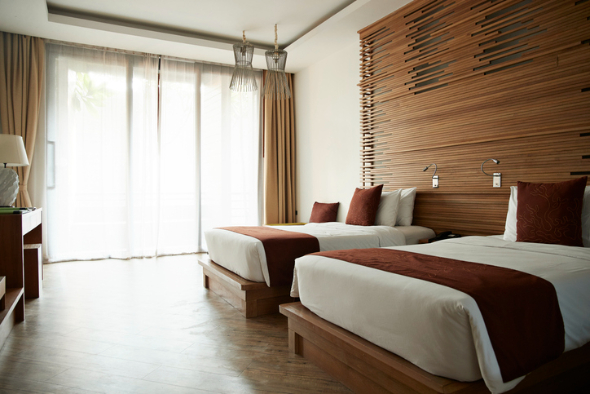


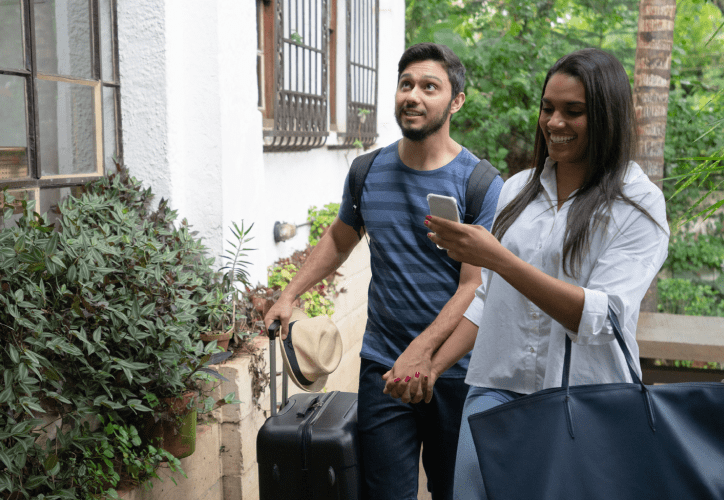
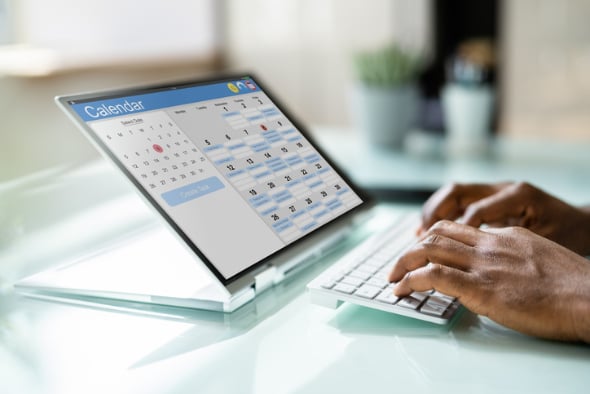
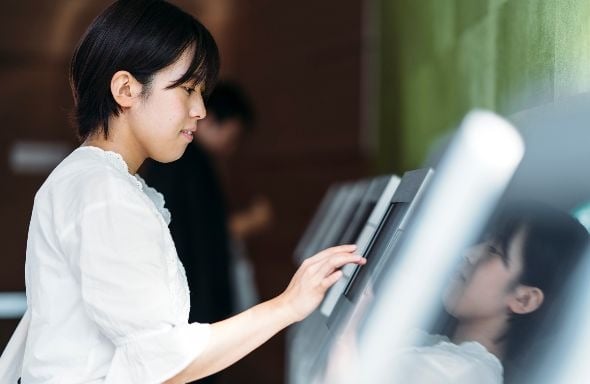
Janifer Harland,
Property Manager
Homewood Cottages